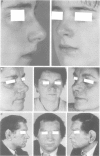Abstract
A large Dutch family had been known for many years to be affected with skin tumours labelled as adenoma sebaceum, which were inherited in an autosomal dominant fashion. Since this skin sign is considered pathognomonic for tuberous sclerosis complex, the condition in the family was labelled accordingly, in the absence of further clinical features of tuberous sclerosis complex-like mental retardation or epilepsy. The skin changes started at early puberty with small eruptions around the nose and progressed to larger tumours, with considerable variation in severity. Some affected members had required plastic surgical reconstruction following excision. Linkage analysis in this family was performed for the two chromosomal regions involved in tuberous sclerosis complex on chromosomes 9q34 and 16p13, but no positive linkage was found. On critical re-evaluation of the clinical and pathological data and renewed assessment, the working diagnosis was changed to autosomal dominant cylindromatosis. The recently published candidate region for cylindromatosis on chromosome 16q12-13 was subsequently proven to be positively linked with a lod score of 3.02 with marker D16S308. Review of pathological specimens confirmed the diagnosis of cylindromatosis. DNA analysis of tumour tissue showed loss of heterozygosity for the cylindromatosis CYLD1 locus. These results confirm the candidate locus for cylindromatosis on chromosome 16q12-13.
Full text
PDF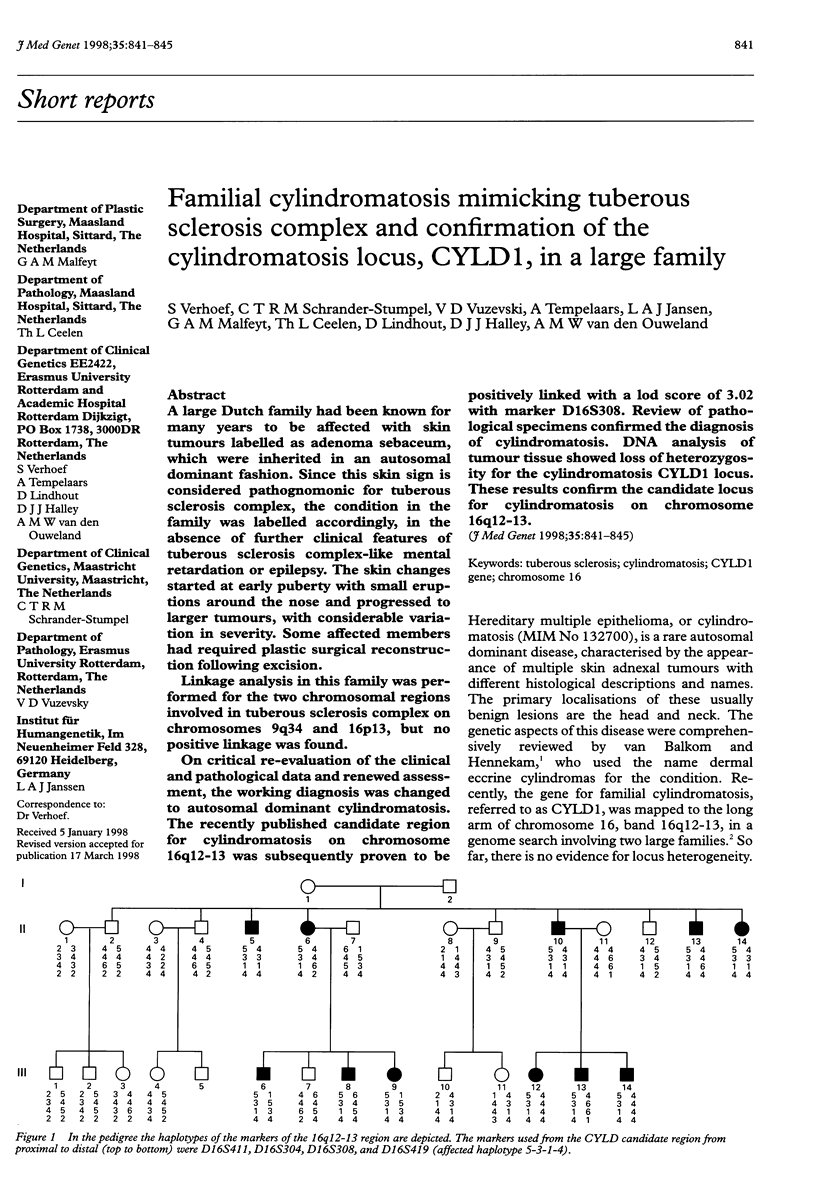

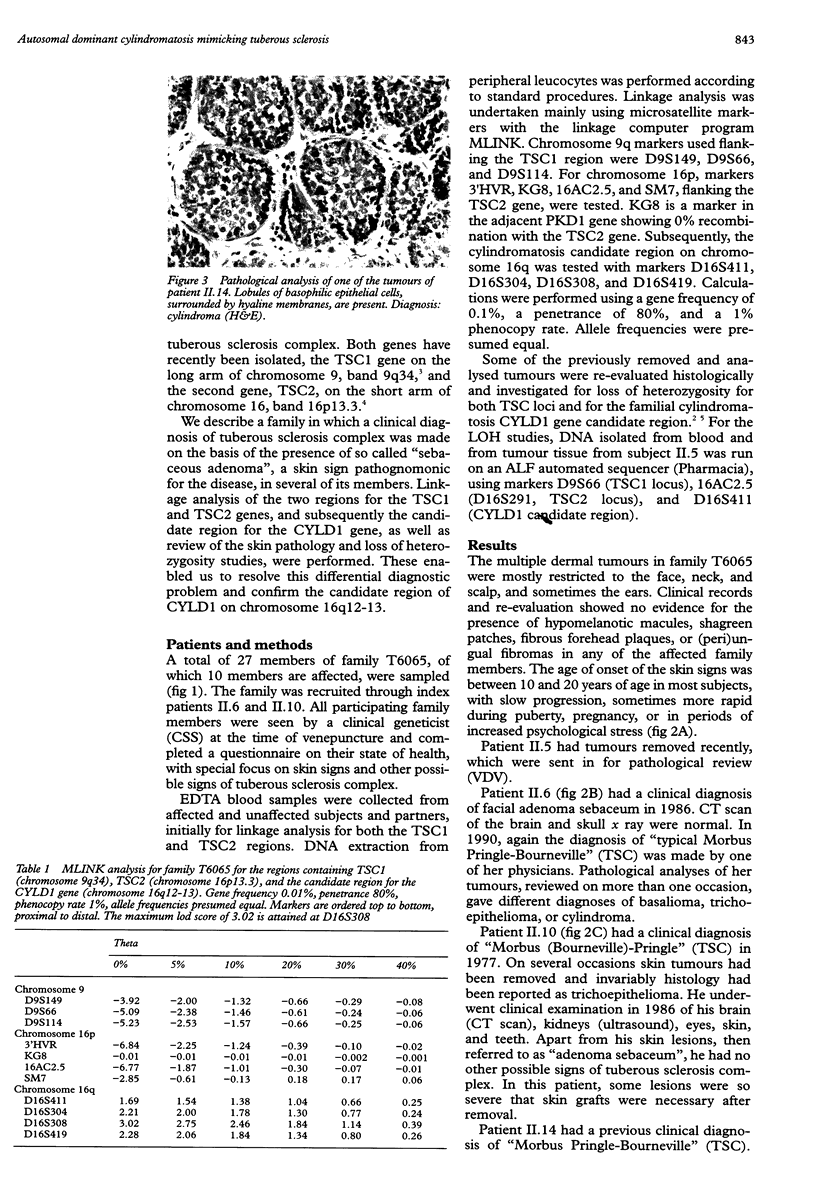
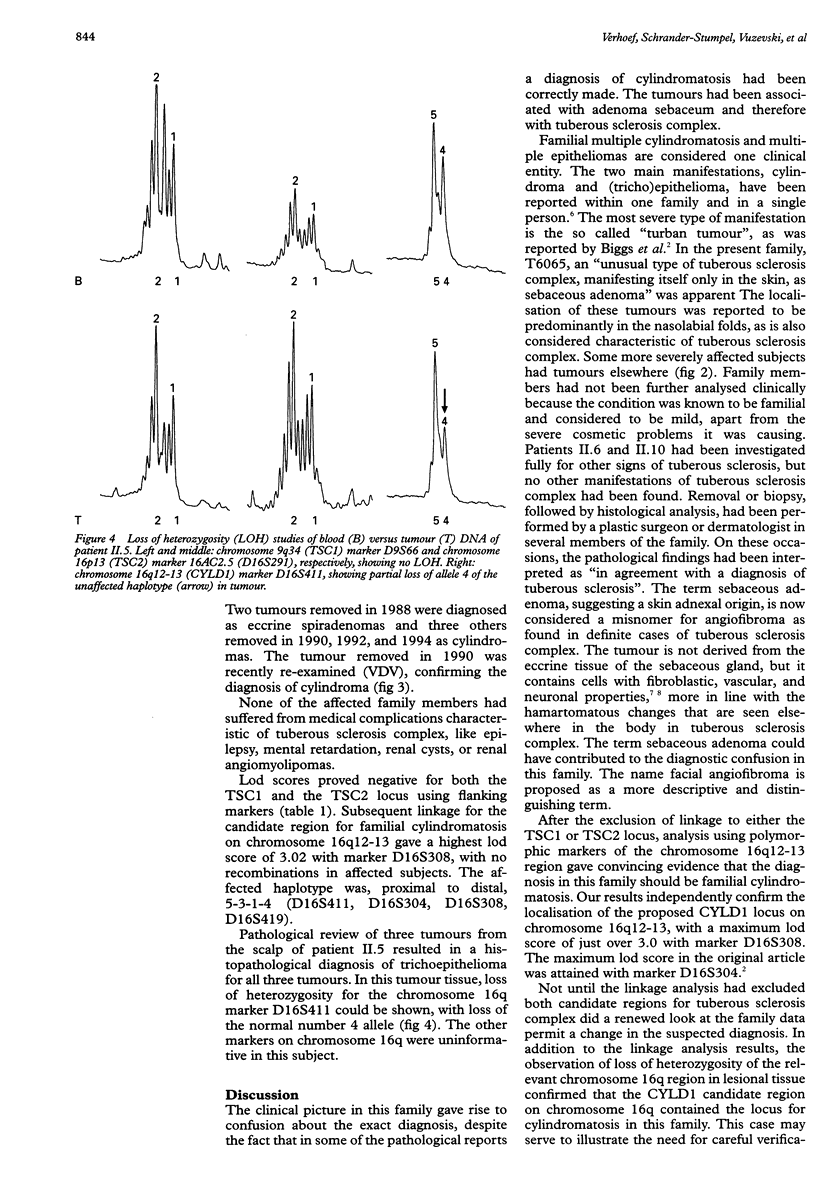
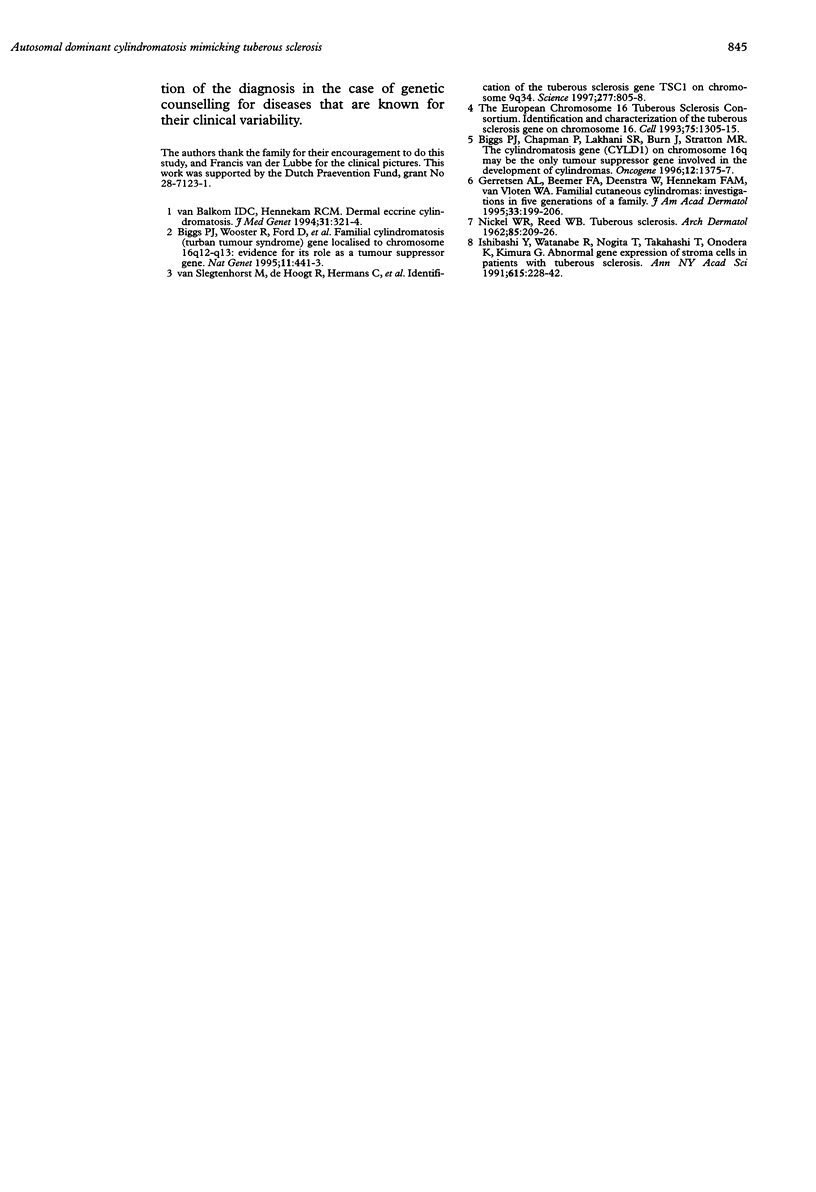
Images in this article
Selected References
These references are in PubMed. This may not be the complete list of references from this article.
- Biggs P. J., Chapman P., Lakhani S. R., Burn J., Stratton M. R. The cylindromatosis gene (cyld1) on chromosome 16q may be the only tumour suppressor gene involved in the development of cylindromas. Oncogene. 1996 Mar 21;12(6):1375–1377. [PubMed] [Google Scholar]
- Biggs P. J., Wooster R., Ford D., Chapman P., Mangion J., Quirk Y., Easton D. F., Burn J., Stratton M. R. Familial cylindromatosis (turban tumour syndrome) gene localised to chromosome 16q12-q13: evidence for its role as a tumour suppressor gene. Nat Genet. 1995 Dec;11(4):441–443. doi: 10.1038/ng1295-441. [DOI] [PubMed] [Google Scholar]
- Gerretsen A. L., Beemer F. A., Deenstra W., Hennekam F. A., van Vloten W. A. Familial cutaneous cylindromas: investigations in five generations of a family. J Am Acad Dermatol. 1995 Aug;33(2 Pt 1):199–206. doi: 10.1016/0190-9622(95)90234-1. [DOI] [PubMed] [Google Scholar]
- Ishibashi Y., Watanabe R., Nogita T., Takahashi T., Onodera K., Kimura G. Abnormal gene expressions of stroma cells in patients with tuberous sclerosis. Ann N Y Acad Sci. 1991;615:228–242. doi: 10.1111/j.1749-6632.1991.tb37764.x. [DOI] [PubMed] [Google Scholar]
- NICKEL W. R., REED W. B. Tuberous sclerosis. Special reference to the microscopic alterations in the cutaneous hamartomas. Arch Dermatol. 1962 Feb;85:209–226. doi: 10.1001/archderm.1962.01590020049006. [DOI] [PubMed] [Google Scholar]
- van Balkom I. D., Hennekam R. C. Dermal eccrine cylindromatosis. J Med Genet. 1994 Apr;31(4):321–324. doi: 10.1136/jmg.31.4.321. [DOI] [PMC free article] [PubMed] [Google Scholar]
- van Slegtenhorst M., de Hoogt R., Hermans C., Nellist M., Janssen B., Verhoef S., Lindhout D., van den Ouweland A., Halley D., Young J. Identification of the tuberous sclerosis gene TSC1 on chromosome 9q34. Science. 1997 Aug 8;277(5327):805–808. doi: 10.1126/science.277.5327.805. [DOI] [PubMed] [Google Scholar]



